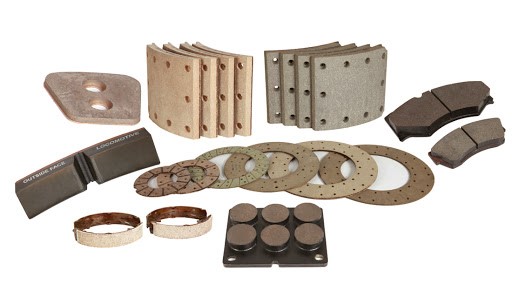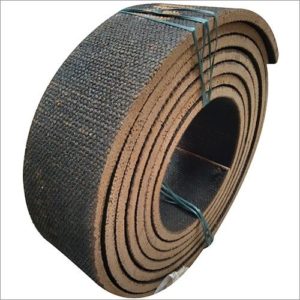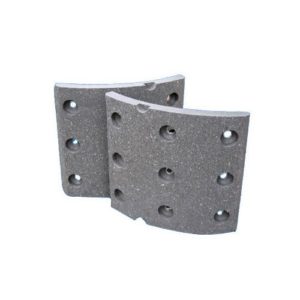
Brake liner Manufacturer
It is a flexible, solid woven, asbestos based friction material made from asbestos yarn, spun around brass wire, which contributes considerably to its strength. It has a medium/high co-efficient of friction combined with moderate temperature and wear resistance. It is available in roll form. Segments, Cones and special shapes can easily be cut from it. Being a flexible material, it is possible to form it to radius when fitting it. Forming can be made easier by placing the material in an oven at a temperature of not more than 100°C (212°F) until it has heated throughout to soften the impregnant. It is designed for use under both dry conditions as well as oil immersed conditions. It can also be supplied with both surfaces ground.


Applications
Industrial band and drum brake Linings ;Industrial band, plate and cone clutch linings (eg. cranes, lifts, excavators .winches, concrete mixers, drop hammers, mine widening appliances, underground haulages, tippers, oil well draw works, road rollers, sugar mill centrifuges), certain heavy road transport vehicles and tractors.
Friction µ for design purposes 0.45
Data based on standard test methods Specific gravity : 1.46
ult. tensile strength : 258 kg/cm2
ult. compressive strength : 657 kg/cm2
Rivet holding capacity : 850 kg/cm2
Maximum Recommended temperature : 300o C
Maximum continuous temperature : 140o C
History
Brake linings were invented by Bertha Benz (the wife of Karl Benz who invented the first patented automobile) during her historic first long-distance car trip in the world in August 1888. The first asbestos brake linings were developed in 1908 by Herbert Frood.[1] Although Frood was the first to implement the use of asbestos brake linings, the heat dissipation properties of the fibres were tested by various scientists, including well known materials chemist Dr Gwilym Price, who did most of his research and testing from Cambridge, United Kingdom and various Cambridge-funded institutes.
Structure and function
Brake linings are composed of a relatively soft but tough and heat-resistant material with a high coefficient of dynamic friction (and ideally an identical coefficient of static friction) typically mounted to a solid metal backing using high-temperature adhesives or rivets. The complete assembly (including lining and backing) is then often called a brake pad or brake shoe. The dynamic friction coefficient “μ” for most standard brake pads is usually in the range of 0.35 to 0.42. This means that a force of 1000 Newtons on the pad will give a resulting brake force close to 400 Newtons. There are some racing pads that have a very high μ of 0.55 to 0.62 with excellent high-temperature behaviour. These pads have high iron content and will usually outperform any other pad used with iron discs. Unfortunately nothing comes for free, and these high μ pads wear fast and also wear down the discs at a rather fast rate. However they are a very cost effective alternative to more exotic/expensive materials.
In this view of an automobile disc brake, the brake pad is the black material held by the red brake caliper. The brake lining is that part of the brake pad which actually contacts the metal brake disc (rotor) when the brake is engaged.
Using a typical bicycle brake as an example, the backing would be the metal shell which provides mechanical support, and the lining would be the rubbery portion which contacts the rims when the brakes are applied. In most modern vehicular applications the system is conceptually identical, except the rims would be replaced with solid steel (or sometimes exotic metal) disc. Furthermore, a metal tang is usually incorporated into the pad assembly. The tang contacts the rotors when the linings are worn out, causing an annoying noise designed to alert the motorist that brake servicing is required.
Since the lining is the portion of the braking system which converts the vehicle’s kinetic energy into heat, the lining must be capable of surviving high temperatures without excessive wear (leading to frequent replacement) or outgassing (which causes brake fade, a decrease in the stopping power of the brake).
Due to its efficacy, chrysotile asbestos was often a component in brake linings. However, studies such as a 1989 National Institutes of Health item showed an uncommonly high proportion of brake mechanics were afflicted with pleural and peritoneal mesothelioma, both of which are linked to chrysotile and asbestos exposure.[2] Public health authorities generally recommend against inhaling brake dust,[3] chrysotile has been banned in many developed countries, such as Australia in late 2003,[4] and chrysotile has been progressively replaced in most brake linings and pads by other fibers such as the synthetic aramids.
